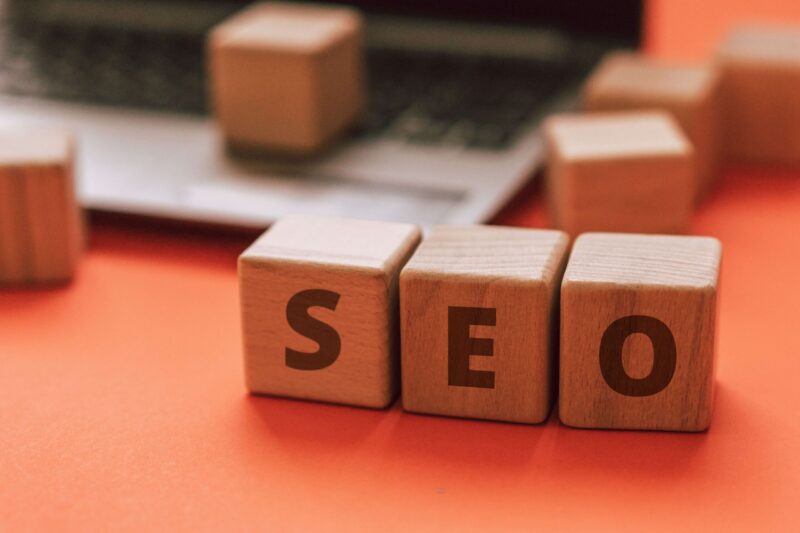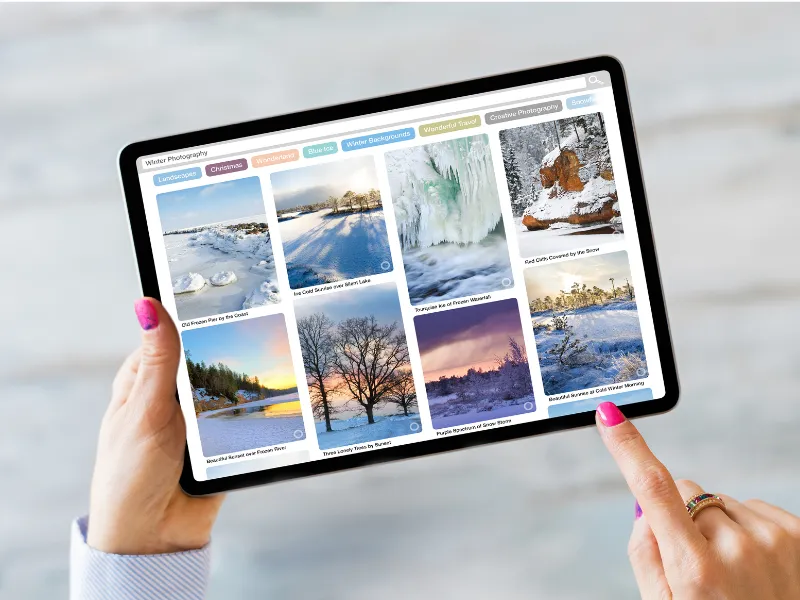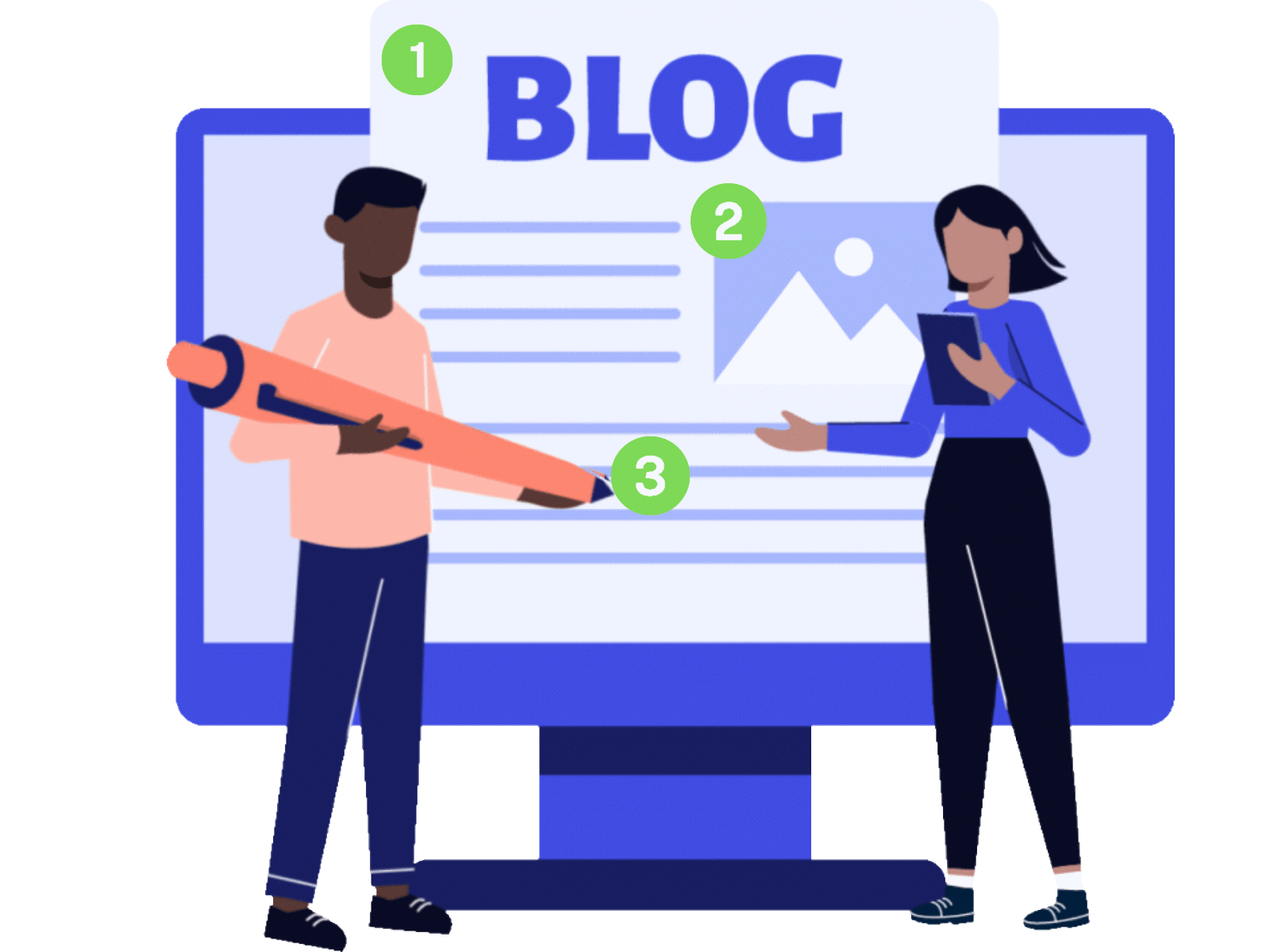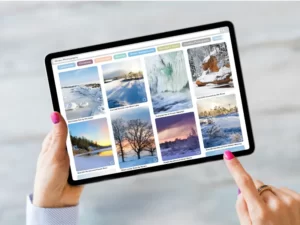Engaging Readers and Enhancing Content
In the fast-paced digital world, where attention spans are dwindling, it’s crucial to captivate readers from the moment they land on your blog. With over 600 million blogs in the world, you must make sure that yours stands out above the rest. While compelling writing is vital, incorporating a blog post image or two can elevate the reading experience and make a lasting impact. In this article, we will delve into the importance of using images in your blog posts and how they can engage readers, enhance your content, and boost the overall appeal of your blog.
Why use blog post images?

- Visual Appeal: Grabbing Attention At First Glance. Humans are visual creatures, naturally drawn to images. Incorporating visually appealing images into your blog posts can instantly capture readers’ attention and entice them to delve deeper into your content. Eye-catching images act as gateways, piquing curiosity and encouraging further exploration.
- Increased Readability: Breaking Up The Text. A wall of text can be overwhelming for readers. By strategically placing images throughout your blog post, you can break up the text and improve readability. Images serve as visual breaks, allowing readers to process information more easily and making your content more approachable.
- Conveying Information: Enhancing Understanding. Sometimes, words alone may not effectively communicate your message. Images provide a powerful medium for conveying information, illustrating concepts, presenting data, or providing examples. By integrating relevant images, you can enhance understanding and ensure that your readers grasp complex ideas with greater clarity.
- Emotional Impact: Creating Connection. Images have a remarkable ability to evoke emotions. They can tell stories, elicit empathy, and create a strong connection with readers. By carefully selecting and incorporating images that resonate with your content, you can evoke the desired emotional response and forge a deeper bond with your audience.
- Shareability and Social Media: Boosting Visibility. In today’s social media-driven landscape, the shareability of your content plays a pivotal role in reaching a wider audience. Blog posts with engaging images are more likely to be shared across social platforms, extending your blog’s reach and attracting new readers. Compelling visuals entice users to click, like, and share, thus increasing your blog’s visibility and potential for growth.

- Search Engine Optimization (SEO): Improving Discoverability. Images play a crucial role in optimizing your blog posts for search engines. By optimizing image filenames, alt text, and captions, you can enhance your blog’s visibility in search engine results. Images can also drive traffic through image searches, allowing you to reach a broader audience.
- Branding and Identity: Establishing a Visual Presence. Consistent use of blog post images can contribute to building your blog’s branding and identity. By adopting a recognizable visual style, incorporating your brand elements, and maintaining consistency across your imagery, you can create a strong visual presence that resonates with your audience and reinforces your blog’s message.
- Audience Engagement: Fostering Community. Images encourage audience engagement and interaction. Compelling visuals inspire readers to leave comments, share their thoughts, and participate in discussions. By incorporating images that resonate with your audience, you can foster a sense of community and encourage active engagement on your blog.
- Storytelling: Enhancing the Narrative. Blog post images possess inherent storytelling qualities. By carefully selecting and incorporating images that align with your blog post’s narrative, you can enhance the storytelling aspect of your content. Images can evoke emotions, create suspense, and immerse readers in the story you’re telling, making your blog post more memorable and impactful.
- Accessibility: Ensuring Inclusivity. It’s essential to make your blog posts accessible to all readers, including those with visual impairments. By providing alternative text (alt text) and descriptive captions for images, you ensure those visually impaired readers can engage with your
How to Choose the Right WordPress Post Image
When choosing images for your blog posts, there are a few things to keep in mind:
- Relevance: The blog post images you choose should be relevant to the topic of your blog post. If you are writing a blog post about how to cook a certain dish, you would not want to include an image of a cat.
- Quality: The images you choose should be high quality. Low-quality images will make your blog posts look unprofessional.
- Size: The images you choose should be the right size for your blog post. If you are using a WordPress blog, you can use the built-in image editor to resize your images. Canva also has excellent resizing and editing capabilities. (See a comparison between Kittl & Canva here)
- Copyright: Use pictures in your blog legally. Make sure you have the right to use the images you choose. How to use pictures on your blog legally: If you are not sure, it is always best to err on the side of caution and use images from free-to-use sites.
Where to Find Images for Your Blog Posts
There are many websites where you can find free or paid blog post images.
Some popular websites include:
- Pexels (free images for blog posts)
- Pond5
- Pixabay
- Shutterstock (Best Rated)
- Getty Images
- Creative Market

How to Use Images in Your Blog Posts
Once you have chosen the right images for your blog posts, you need to decide where to place them. Here are a few tips:

- Place images at the top of your blog posts. Images at the top of your blog posts will be seen by most people.
- Place images near your text. Images near your text will help to break up the text and make your posts easier to read.
- Use images to illustrate your points. Images can help to illustrate your points and make your posts more informative.
- Use blog post images to improve your SEO ranking. As mentioned earlier, search engines like Google use images to help rank websites in their search results. If you include high-quality images in your blog posts, you can improve your chances of ranking higher in search results.
Conclusion
Images can make your posts more visually appealing, easier to read, and more informative. They can also help you to improve your SEO ranking. So next time you are writing a blog post, don’t forget to include a blog featured image!
FAQ
What is the lightest and smallest image format to use in a blog post?
WebP is an advanced image format designed to offer exceptional lossless and lossy compression for web images. By utilizing WebP, webmasters and web developers can generate smaller yet higher-quality images, resulting in faster-loading web pages.
What image formats support transparency?
Raster file formats: WEBP, GIF, PNG, BMP, TIFF, TGA and JPEG 2000
Vector file formats: SVG












[…] optimization is not only crucial for SEO purposes, but it also plays a significant role in enhancing user experience on your website. An optimized image can improve a website’s loading speed, reduce bounce […]